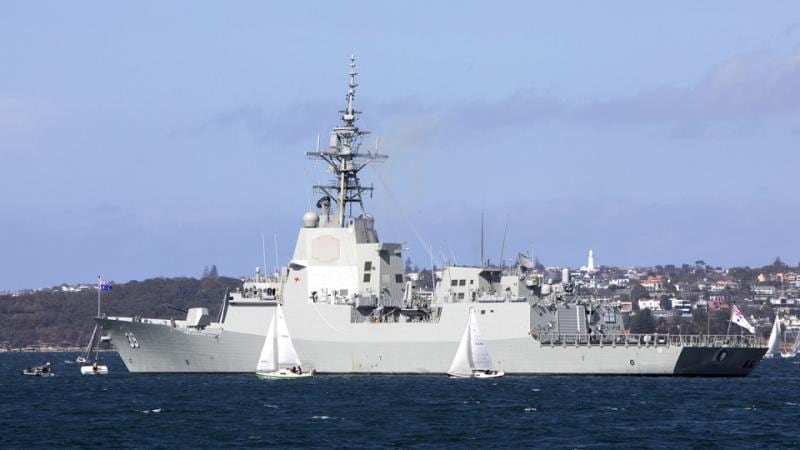China has defended its recent maneuver against an Australian naval helicopter in the Yellow Sea, deemed by Canberra to be “unsafe and unprofessional,” saying it was “legitimate and reasonable.”
Australian Prime Minister Anthony Albanese on Tuesday said his government had communicated to China "through all of our channels, at all measures at our disposal" that it was "unacceptable" when a Chinese fighter jet dropped flares close to an Australian helicopter in international waters, endangering the crew.
Separately, Australia's defense ministry said in a statement the incident took place on Saturday when the Royal Australian Navy's Hobart was undertaking "routine activities" during a U.N. mission to monitor sanctions against North Korea in international waters in the Yellow Sea.
The Yellow Sea is a marginal sea of the Western Pacific Ocean between mainland China and the Korean Peninsula.
A MH-60R Seahawk helicopter launched from the Hobart was intercepted by a Chinese fighter aircraft which released flares across the flight path of the Australian aircraft, the Australian ministry said, adding that the unsafe maneuver “posed a risk to the aircraft and personnel.”
While there were no injuries, the Australian government “expressed concern” and said it expected all countries, including China, “to operate their militaries in a professional and safe manner.”
China’s response
The Chinese defense ministry responded late on Tuesday that Australia “was confused between right and wrong.”
Ministry spokesman Zhang Xiaogang said between May 3-4, when the Chinese military was holding training exercises in the Yellow Sea, an Australian military helicopter was sent from the Hobart three times "to conduct close reconnaissance and disrupt China's normal training activities."
Zhang said that China’s warnings and forcing the helicopter to leave were “legitimate, reasonable, professional and safe, and fully complied with international law and international practice.”
The Chinese spokesman called on Australia to “respect China’s sovereignty and security concerns, stop spreading false narratives … and stop all dangerous and provocative actions.”

Australia has been sending vessels and aircraft to the area to enforce U.N. Security Council sanctions against North Korea since 2018. A military analyst said the missions were being carried out “in international airspace over international waters in the Yellow Sea.”
“The Chinese claim lacks any basis in evidence, and deliberately mischaracterizes the actions of the Australians,” Malcolm Davis, a senior analyst at the Australian Strategic Policy Institute, told Radio Free Asia.
“There was no justification whatsoever for the Chinese to release flares in the manner they did, which was in an aggressive, unsafe and unprofessional manner,” Davis added.
Daniel Kritenbrink, U.S. assistant secretary of state for East Asian and Pacific affairs, said that Washington was “deeply concerned” to see reports of the incident.
Similar encounters
Flares when fired at an aircraft at close proximity could get into the engine and cause the plane to crash.
In late October 2023, a Chinese warplane also used flares against a Canadian shipborne maritime helicopter over the South China Sea. The Sikorsky Cyclone helicopter was launched from the Royal Canadian Navy frigate Ottawa to search for a previously detected submarine in international waters.
China accused Canada of conducting a “malicious and provocative act with ulterior motives.”
In another incident last November, Australia said that a Chinese destroyer operated its sonar device near divers from the Royal Australian Navy’s Toowoomba, causing them minor injuries.
The divers were working to clear a fishing net tangled in the ship’s propellers in international waters near Japan when a Chinese warship approached them and released sonar pulses, forcing them to surface.
The Toowoomba was also conducting operations in support of U.N. sanctions enforcement against North Korea at the time.
Edited by Mike Firn and Taejun Kang.
